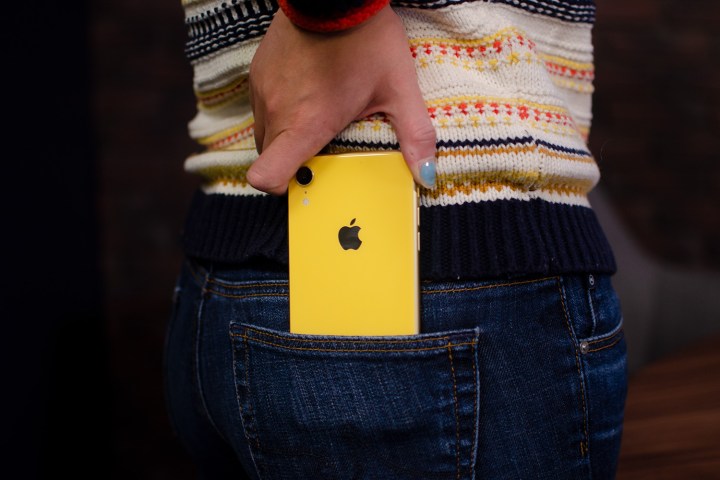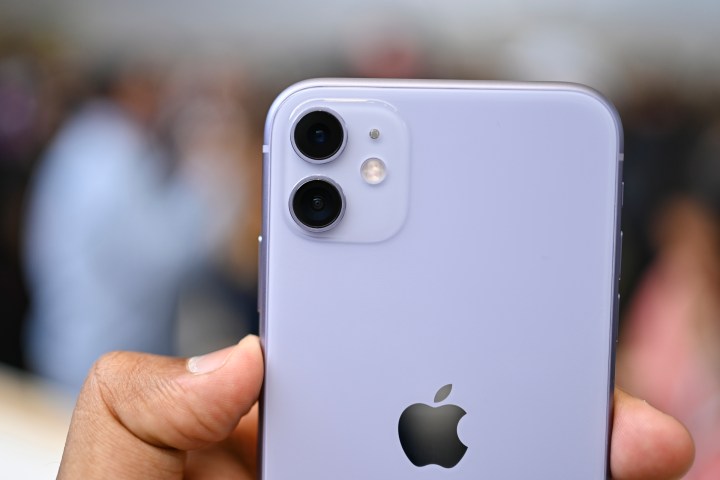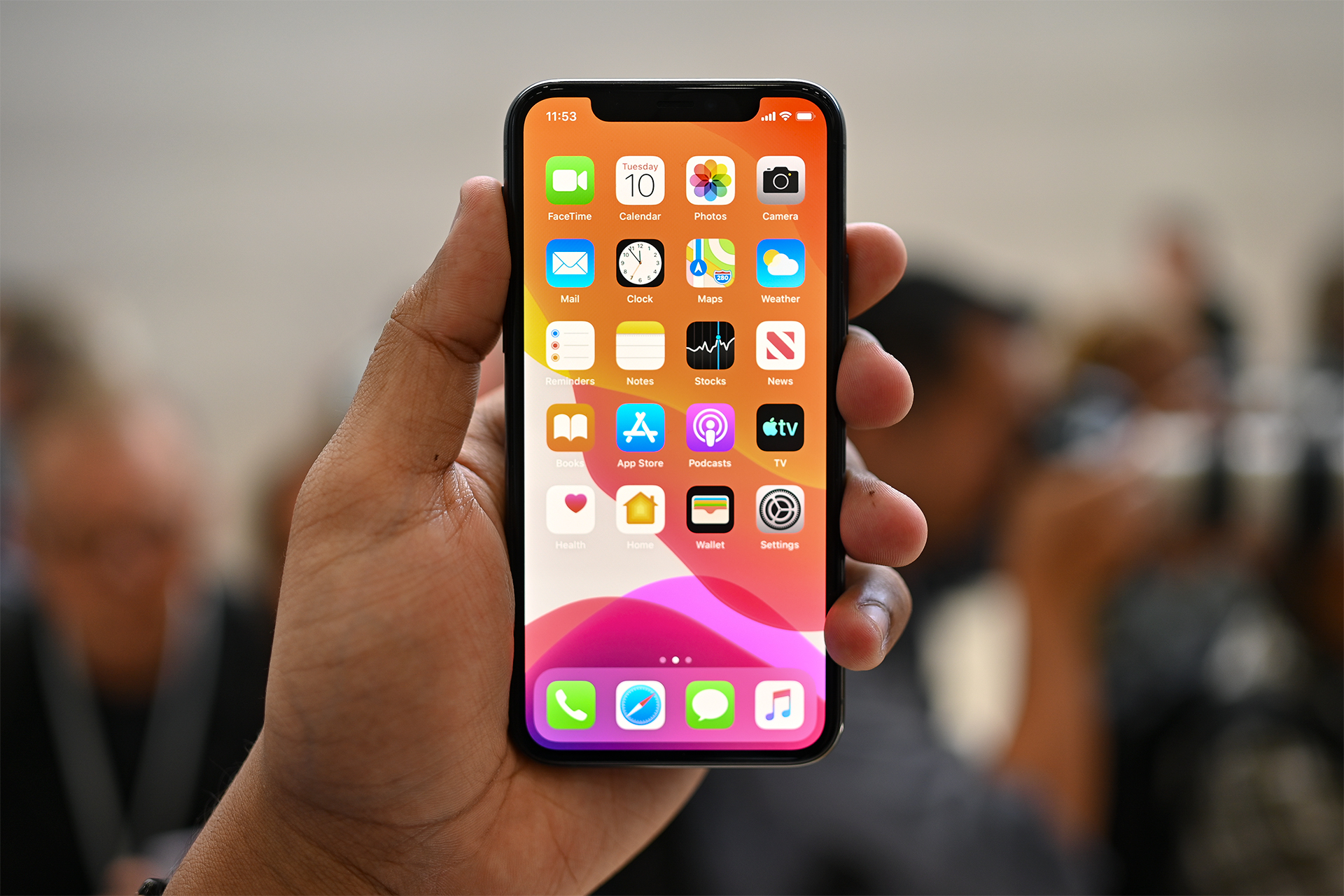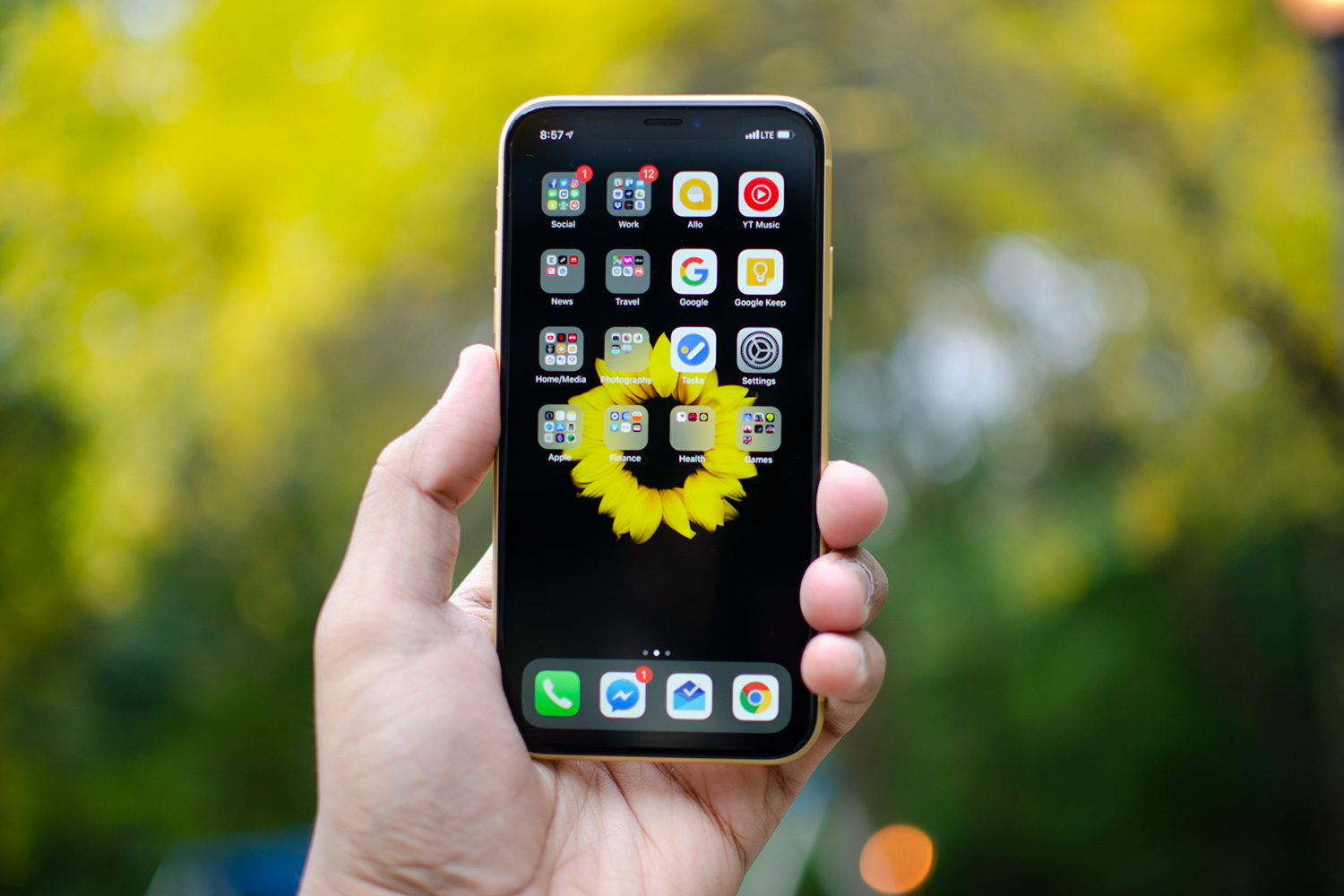It may not be current-gen anymore, but the iPhone 11 remains a great smartphone. A follow-up to 2018’s iPhone XR, the iPhone 11 takes a winning formula, adds an extra camera lens, and ups the processing power on offer. It’s a fantastic iPhone, and with a price tag of $499, it’s a more tempting prospect for most than the $999 iPhone 13 Pro.
But the iPhone XR can still be found, and it’s still excellent. It’s also seen a price cut in the years since its launch, and the powerful and attractive iPhone XR is a great choice if you’re looking for a cheaper iPhone. But there’s only room for one of them in your pocket. Which of these two iPhones should you be exchanging your dollars for? We took a look at the two head-to-head to find out whether you should buy the iPhone 11 or the iPhone XR.
Specs
| iPhone 11 |
iPhone XR | |
| Size | 150.9 × 75.7 × 8.3 mm (5.94 × 2.98 × 0.33 inches) | 150.9 × 75.7 × 8.3 mm (5.94 × 2.98 × 0.33 inches) |
| Weight | 194 grams (6.84 ounces) | 194 grams (6.84 ounces) |
| Screen size | 6.1-inch Liquid Retina HD IPS LCD | 6.1-inch Liquid Retina HD IPS LCD |
| Screen resolution | 1792 × 828 pixels (326 pixels per inch) | 1792 × 828 pixels (326 pixels per inch) |
| Operating system | iOS 14 | iOS 14 |
| Storage space | ||
| MicroSD card slot | No | No |
| Tap-to-pay services | Apple Pay | Apple Pay |
| Processor | Apple A13 Bionic | Apple A12 Bionic |
| RAM | 4GB | 3GB |
| Camera | Dual 12MP wide-angle and 12MP ultra-wide-angle (with OIS) rear, 12MP TrueDepth lens front | 12MP (with OIS) rear, 7MP TrueDepth front |
| Video | Up to 4K at 60 frames per second, 1080p at 240 fps | Up to 4K at 60 frames per second, 1080p at 60 fps |
| Bluetooth version | Bluetooth 5.0 | Bluetooth 5.0 |
| Ports | Lightning | Lightning |
| Fingerprint sensor | No | No |
| Water resistance | IP68 | IP67 |
| Battery | 3,110mAh
Fast charge capable (Additional charger needed) Qi wireless charging |
2,942mAh
Fast charge capable (Additional charger needed) Qi wireless charging |
| App marketplace | Apple App Store | Apple App Store |
| Network support | T-Mobile, AT&T, Verizon, Sprint | T-Mobile, AT&T, Verizon, Sprint |
| Colors | Black, Green, Yellow, Purple, (Product) Red, White | White, Black, Blue, Yellow, Coral, (Product) Red |
| Price | $499 | $399-299 |
| Buy from | Apple | Walmart, Best Buy |
| Review score | 4 out of 5 stars | 4.5 out of 5 stars |
Performance, battery life, and charging

The iPhone 11 comes equipped with Apple’s still-strong A13 Bionic processor. It’s fast and powerful; in fact, it’s up to 20% faster and 40% more power-efficient than the Apple A12 Bionic chip in the iPhone XR. That said, the XR still has enough power to satisfy most people’s needs, and both these iPhones can still run the latest games and apps with ease.
Both phones have the same fast charging and wireless charging capabilities, but the iPhone 11 packs a 3,111mAh, as opposed to the iPhone XR’s 2,942mAh cell. While the XR already had excellent battery life, the 11 goes just a little further, so we’re going to give this opening round to the newer phone.
Winner: iPhone 11
Design and durability
You’d be forgiven for being unable to tell the iPhone XR and 11 apart. Pretty much the only major difference is the addition of the extra camera lens on the iPhone 11, and a selection of different colors. Dimensions, weight, build materials — it’s all pretty much the same, and it makes this category a tough one to judge.
Thankfully, there’s more to it than just looks. Physical durability across the two iPhones is similar, with aluminum and glass builds, so getting a case is the best way to avoid potentially costly repairs, but the iPhone 11 has improved water resistance, sporting an IP68-rating that’s superior to the iPhone XR’s IP67-rating. That means it can be submerged in up to 2 meters of water for 30 minutes without damage whereas the iPhone XR can only handle depths of 1 meter. The iPhone 11 wins narrowly.
Winner: iPhone 11
Display

Like the design, all is the same where the displays are concerned. The iPhone 11 is rocking the same 6.1-inch Liquid Retina (LCD) display as the iPhone XR, including the same 1792 x 828 resolution with a pixels-per-inch measurement of 326. It’s a good display, but look close enough and you’ll see pixels. Neither can nail the deep blacks and vibrant colors that the iPhone 11 Pro’s AMOLED display is capable of, but there’s no obvious difference between the screens on the iPhone 11 and XR. There’s no way we can rule one way or the other here.
Winner: Tie
Camera

While it was the only 2018 iPhone to release with just a single camera lens on the rear, the iPhone XR’s single 12-megapixel lens still delivers some excellent-looking snaps and has a great portrait mode. The iPhone 11 builds on that foundation, adding a second lens to Apple’s cheaper range. The iPhone 11 is equipped with a dual-lens system, comprising a 12MP wide-angle lens paired with a 12MP, ultra-wide-angle lens. It’s that ultra-wide-angle lens that makes the most difference, offering a 120-degree field of view that enables you to pack much more into your shots.
The iPhone 11 takes everything that made the iPhone XR’s camera great and adds even more. The addition of a 12MP selfie camera with slow-motion selfies (slofies) is just overkill. There’s no doubt in our minds the iPhone 11 takes this category easily.
Winner: Apple iPhone 11
Software and updates

No surprises here — both the iPhone 11 and iPhone XR run Apple’s latest-and-greatest mobile operating system, iOS 15. As with the older phone, the iPhone XR will receive fewer major OS updates than the iPhone 11. But with Apple’s extremely strong update record, it’ll be some time before the iPhone XR receives its final version of iOS. As such, don’t let that factor be a major element when deciding between the two iPhones — they’ll be running the same version of iOS for a long time in the future. This has to be a tie.
Winner: Tie
Special features

Apple’s never gone in for the Samsung approach of cramming as many special features as possible, and it means features only really come to iPhone when they’re polished and ready. You’ll find examples of these on both iPhones — there’s the AR-enabling ARKit 2.0, the secure facial scanning Face ID technology that replaces Touch ID, and Apple’s continued support for its virtual assistant, Siri. Both phones work with Animojis and Memojis, and you’ll find all the latest iOS 15 features on both, too. There’s no serious difference between the two in this regard. It’s a tie.
Winner: Tie
Price and availability
The iPhone 11 was the cheapest iPhone since the iPhone 8, and now starts at just $499 for the 64GB model. It can be bought through most retailers, and it works on every major U.S. carrier.
The iPhone XR is no longer being sold by Apple. It used to start from $749, but the reveal of the iPhone 11 and then the iPhone 12 has resulted in it being given two price cuts. But even though Apple no longer offers it, it’s still available from a bunch of different retailers. Prices range between $399 and $299, and you can find it at both Best Buy and Walmart — just keep an eye out for network-locked models if you’re wanting to take it to another carrier.
Overall winner: Apple iPhone 11
The results are clear to see — the iPhone 11 is superior to the iPhone XR. But even though it’s a clear result, it’s closer than you’d think. The iPhone 11 is an improved version of the iPhone XR, but those improvements are relatively minor. There’s a faster processor, a bigger battery, and an extra camera lens, but aside from that, the two phones are almost identical. If you’re currently reading this on your iPhone XR, there’s no need to upgrade to an iPhone 11.
But if you’re using a creaky old iPhone and you’re weighing up these two cheaper iPhones with glee, your choice is a tougher one to make. On paper, the iPhone 11 is worth the extra money. But if you’re not sold on the extra camera lens, you should consider saving money by investing in the iPhone XR. Don’t worry about the faster processor and larger battery either, as the iPhone XR is plenty fast and long-lasting as it is. But really, there’s no losing when it comes to this choice. You’ll be happy either way.





